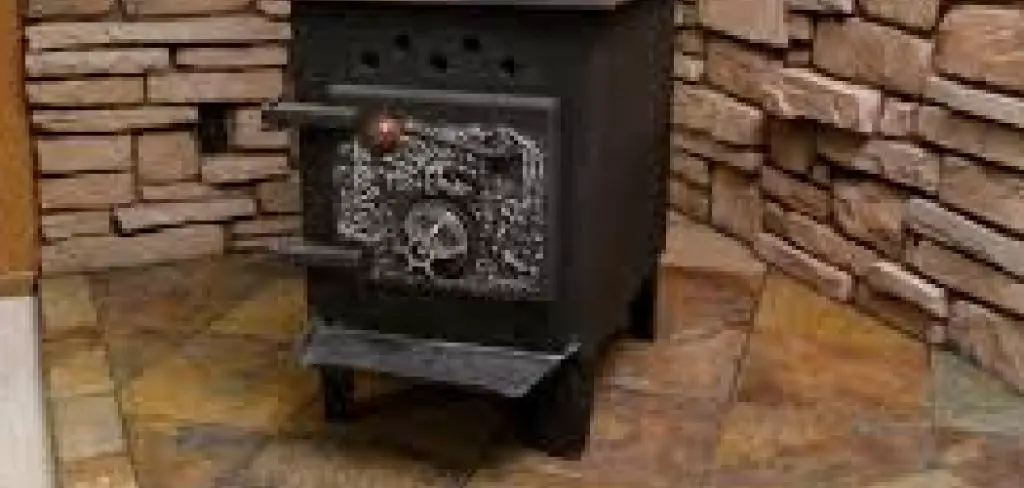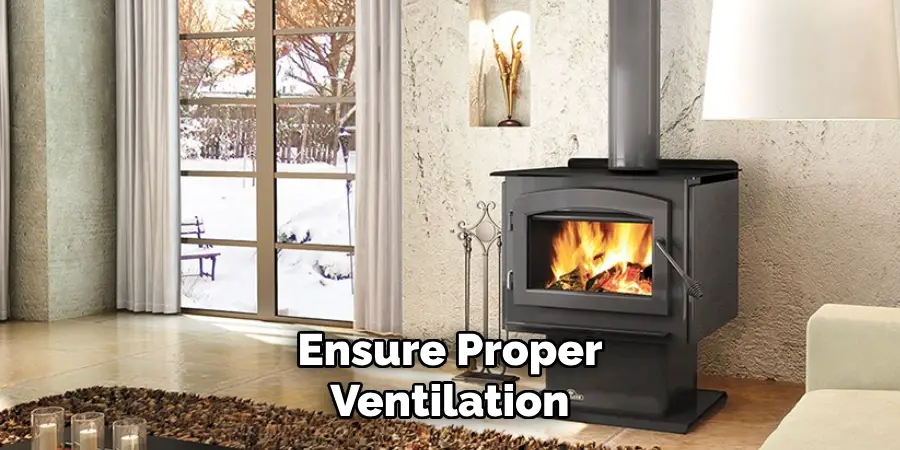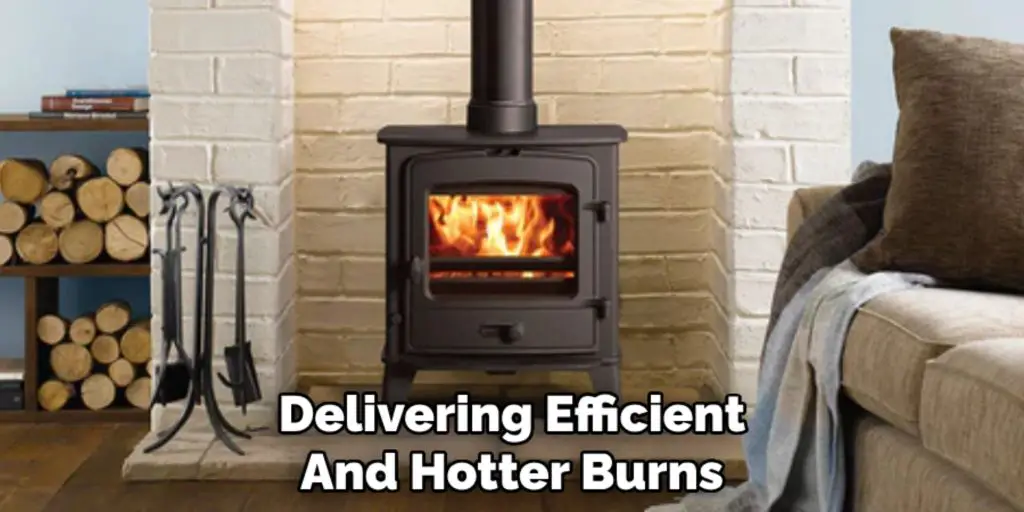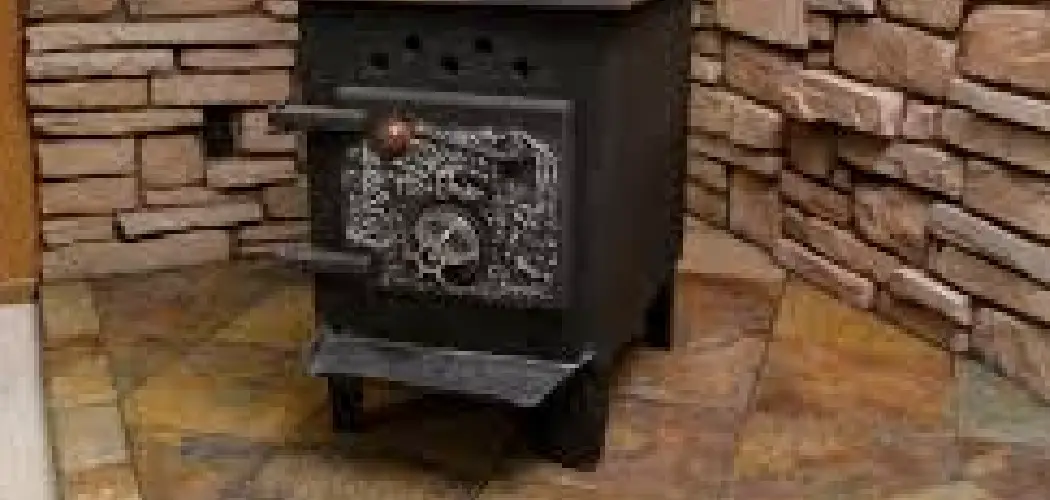Wood stoves have become a popular choice for home heating due to their cost-effectiveness, eco-friendliness, and the cozy ambiance they create. These stoves provide a reliable heating solution that can significantly reduce energy bills, as they utilize renewable resources like wood instead of fossil fuels. Additionally, their warm glow and the crackling sound of burning logs make them a charming centerpiece during cold months.

However, one of the main challenges with wood stoves is their tendency to concentrate heat in one room, leading to uncomfortable cold spots in other parts of the home. To address this issue, it’s crucial to explore strategies on how to circulate heat from wood stove units efficiently. This article presents practical methods for evenly distributing warmth evenly throughout the house, ensuring a more comfortable living environment while maintaining the advantages of a wood stove.
Understand Your Wood Stove Setup
1. Evaluate the Wood Stove Type
Understanding the type of wood stove you own is essential for optimizing its heating potential. Wood stoves typically come in three configurations: freestanding, inserts, and built-ins. Freestanding stoves are versatile and can heat large areas, while inserts are designed to fit into existing fireplaces, offering a space-efficient heating solution. Built-in stoves are often integrated into the home’s structure, providing consistent warmth with a more permanent fixture. Knowing your stove’s heating capacity and efficiency ratings helps determine the most effective methods for circulating heat throughout your home.

2. Assess the Room Layout
Your home’s design significantly impacts how heat from a wood stove spreads. Evaluate the layout by considering open versus closed spaces, the proximity of rooms to the stove, and natural airflow patterns. Open floor plans allow heat to disperse more easily, while closed-off rooms may require additional warmth strategies. Identify any colder areas that receive insufficient heat, as these will need targeted solutions to improve comfort.
3. Ensure Proper Ventilation
Proper ventilation is crucial for effective heat distribution and to prevent air stagnation around the wood stove. Check that ventilation systems, windows, and doors function well to facilitate better air circulation. Good airflow maximizes heat dispersal and maintains air quality, keeping your home environment warm and healthy.

How to Circulate Heat from Wood Stove: Utilize Ceiling Fans for Air Circulation
1. Adjust Ceiling Fans to Reverse Direction
During the winter months, ceiling fans can be valuable in circulating warm air generated by your wood stove. It is crucial to adjust your ceiling fans to rotate clockwise. This setting is designed to push warm air that naturally rises back into the living space, enhancing the room’s overall warmth. By gently moving the warm air downwards without creating a chilly breeze, this technique ensures that the heat is consistently spread across the room, effectively utilizing the warmth produced by the wood stove.
2. Position Fans Strategically
To maximize heat circulation from your wood stove, strategically position ceiling fans in key areas of your home. Ideally, fans should be placed in locations adjacent to the wood stove, allowing them to distribute warmth throughout the space efficiently. For homes with multiple rooms, consider installing ceiling fans in different areas to ensure that warm air reaches even the farthest corners. This setup can help eliminate cold spots and foster a more consistent temperature throughout the entire house, improving comfort in every room.

3. Use Standalone Fans
Standalone fans can further aid in directing warm air from the wood stove into rooms where ceiling fans may not be present. These portable fans provide flexibility in placement and can be effortlessly moved to focus on specific areas. For optimal effectiveness, strategically angle standalone fans, such as positioning them in doorways or hallways that lead to cooler areas. By methodically directing the warm air, standalone fans complement ceiling fans, working together to maintain a pleasant and even temperature across the home.
How to Circulate Heat from Wood Stove: Install a Heat Distribution Kit
1. Understand What a Heat Distribution Kit Is
Heat distribution kits are designed to enhance the natural convection of warm air from your wood stove, ensuring even heat distribution throughout your home. These systems can work with your existing ductwork or employ blowers to push heat to different parts of the house. There are various types of heat distribution kits available, including simpler models that use a series of ducts and fans to move hot air from room to room and more advanced systems that integrate with your current heating and ventilation setup. Utilizing these kits allows you to maintain a more evenly heated environment, minimizing cold zones and maximizing your wood stove’s efficiency.
2. Install a Blower System
Installing a blower system is an effective way to circulate warm air from your wood stove. Here’s a step-by-step guide to consider:

- Select the Appropriate Blower Model: Choose a blower system compatible with your stove. Consider factors such as the size of your stove, the area you want to heat, and the blower’s specifications.
- Attach the Blower to the Stove: Follow manufacturer instructions to securely mount the blower onto the wood stove. Ensure all connections are tight to optimize airflow.
- Power the Blower: Connect the blower to an appropriate power source. Some models may require hardwiring, while others can simply be plugged into an outlet.
- Adjust Settings and Test: Once installed, adjust the settings according to your heating requirements and test the blower system to ensure it’s effectively distributing the heat.
3. Connect to Existing HVAC Systems
Consider integrating your wood stove with your home’s HVAC system for enhanced efficiency. This setup allows the use of existing ductwork to transport warm air throughout the house. Before proceeding, it is advisable to evaluate your current system and consult with a professional. They can provide insight into the feasibility of the integration and ensure the installation meets safety standards. This professional guidance is crucial for complex configurations, ensuring the wood stove and HVAC systems work in tandem to provide optimal heat distribution.
Create a Natural Airflow Path
1. Open Interior Doors
Keeping interior doors open is a simple yet effective method to allow warm air from your wood stove to flow freely into adjacent rooms. This practice can significantly help in creating a more even temperature throughout the house. By ensuring unobstructed pathways, the heat can move naturally, reducing the likelihood of cold spots in rooms located farther from the stove. Additionally, this easy adjustment requires no special equipment, merely the habit of keeping doors open when comfort conditions are needed. Remember to keep safety in mind, especially if small children or pets are in the home.
2. Use Fans in Doorways
Positioning small fans in doorways is an excellent tactic to draw warm air into cooler areas of your home. Placing these fans strategically at the bottom of doorways can create a pressure difference that encourages airflow. The fans work to pull warm air from heated spaces into colder adjacent rooms, promoting a consistent temperature throughout your home. This technique enhances comfort and complements other heat distribution methods, further optimizing the warmth generated by your wood stove. Ensure that fans are positioned securely and operated safely, keeping cords out of common traffic paths to prevent tripping hazards.
3. Block Cold Drafts
Identifying and sealing gaps around windows and doors is crucial to preventing cold air from entering and warm air from escaping your living spaces. Addressing these drafty areas involves using draft stoppers on the bottom of doors to block incoming cold air. Additionally, applying weather stripping around window and door frames seals gaps effectively. Heavy curtains or thermal drapes can provide an extra layer of insulation, reducing heat loss through glass panes. By investing time in sealing these leaks, you can maintain the desired warmth in your home, enhancing the effectiveness of your wood stove and contributing to overall energy efficiency.

Insulate and Seal Your Home
1. Improve Insulation
Good insulation is vital for retaining heat within your home, significantly optimizing the performance of your wood stove and reducing overall energy costs. Insulate walls, attics, and basements to create an effective barrier against heat loss. Start by evaluating the current insulation levels; you can do this by inspecting visible insulation in your attic or by consulting with a professional. Adding insulation where it is inadequate, such as spray foam or fiberglass batts, can improve overall energy efficiency. It is particularly important to address attic insulation, as heat tends to rise and may escape through poorly insulated spaces.
2. Seal Windows and Doors
Windows and doors are common sources of heat loss due to drafts. Begin by conducting a thorough inspection to identify any gaps or cracks around these areas. Use high-quality caulk to seal any visible cracks or gaps along window edges and door frames. Apply weatherstripping for gaps where windows or doors meet their frames to establish an effective seal. Additionally, consider using heavy curtains or thermal blinds as they provide an extra layer of protection, further insulating these vulnerable areas and helping to maintain a consistent indoor temperature.
3. Consider Heat Reflective Materials
Using heat-reflective materials can effectively redirect warmth back into the room, maximizing the heat your wood stove generates. Install heat-reflective panels or sheets behind the stove to prevent heat from escaping through walls. These materials are readily available at home improvement stores and can be installed safely by following the manufacturer’s instructions. Ensure panels are placed with adequate clearance from the stove to avoid fire hazards. Utilizing these panels efficiently enhances the heat distribution within your living space, ensuring that more warmth is retained where it’s needed most.
Utilize Thermal Mass for Heat Retention
1. Incorporate Heavy Materials
Incorporating heavy materials like brick, stone, or tile around your wood stove can significantly enhance heat retention. These materials absorb heat from the stove and release it slowly over time, helping maintain a consistent room temperature. To optimize this effect, consider positioning thermal mass materials around the stove without obstructing airflow. For instance, placing a brick wall or tiles on the floor near the stove can act as an effective heat bank. The gentle release of warmth allows your living space to stay comfortable well after the fire has died down, reducing your need for constant fuel feeding.
2. Use Heat-Storage Solutions
Investing in heat-storage solutions such as soapstone or masonry heaters can provide longer heat retention compared to standard wood stoves. These systems are designed to store large amounts of heat and gradually release it over several hours. Soapstone, for instance, is a naturally heat-retentive material that enhances the stove’s efficiency by prolonging warmth in your home. Masonry heaters incorporate a series of internal channels that absorb and store heat, effectively distributing it even after the fire has gone out. Though they may require a larger initial investment, the benefits of reduced fuel consumption and consistent heat make them a viable option for enhanced heat distribution in colder climates.
Additional Tips for Efficient Wood Stove Use
1. Burn Seasoned Wood
For optimal performance, always burn seasoned hardwood. Seasoned wood, which has been dried for at least six months, ignites more easily and produces more heat, delivering efficient and hotter burns. This enhances your wood stove’s heat output and leaves less creosote buildup, reducing chimney-related hazards. To ensure your wood supplies remain dry and ready for use, store logs in a well-ventilated area, off the ground, and protected from rain with a tarp or cover.

2. Monitor and Adjust Airflow
Controlling the airflow to your wood stove is crucial for managing the burn rate and heat output. Proper air intake adjustment regulates how quickly the wood burns, directly affecting the stove’s thermal efficiency. Open vents fully to ignite the fire, then gradually close them to maintain desired temperatures and prolong fuel duration. Understanding how airflow impacts heat production allows for more controlled and consistent heat distribution throughout your home.
3. Schedule Regular Maintenance
Regular maintenance ensures your wood stove operates safely and efficiently. It’s vital to clean the flue periodically to remove any creosote buildup, which is a major fire risk. Additionally, check for any necessary repairs to seals and components that might affect performance. Schedule professional inspections annually to guarantee that your stove is in peak condition, securing a dependable heat source through the colder months.
Conclusion
Effectively circulating heat from a wood stove throughout your home enhances comfort and thermal efficiency. Implementing proper insulation, sealing windows and doors, and using thermal mass materials can significantly contribute to better heat retention. Managing airflow carefully allows for consistent temperature control, optimizing the stove’s performance. Understanding “how to circulate heat from wood stove” is key; experiment with these various methods and tailor them to your specific home layout and heating needs. With informed adjustments, your wood stove can become a more efficient and reliable source of warmth during colder months.
About
Angela is the chief editor of Indoorense. She began her career as an interior designer before applying her strategic and creative passion to lifestyle and home.
She has close to 15 years of experience in creative writing and online content strategy for housekeeping and cleaning,home decorations as well as other efforts.
She loves her job and has the privilege of working with an extraordinary team. She lives with her husband, two sons, and daughter in Petersburg. When she’s not busy working she spent time with her family.

